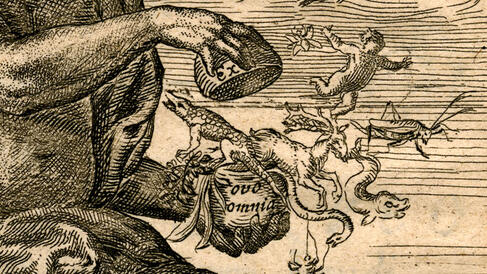About

Frontispiece from William Harvey, Exercitationes de generatione animalium (1651). Image credit: Cambridge University Library
Cambridge historians of medicine and biology used Wellcome enhancement and strategic awards (2004–10 and 2010–18) to develop the concerted approach to the history of reproduction that is showcased in the book Reproduction: Antiquity to the Present Day. The cross-disciplinary group of researchers continues to offer new perspectives on issues ranging from ancient fertility rites to IVF. Building on a lively field of historical investigation, we aim to provide a fresh basis for policy and public debate. We participate in the University-wide Strategic Research Initiative on Reproduction that began in October 2018.
From contraception to cloning and from pregnancy to populations, reproduction presents urgent challenges today. History enables us to take long views. We can look back like a biologist or demographer and find reproduction in every century, but for historians 'reproduction' also means a set of ideas and practices that are specifically modern. Before the nineteenth century, most educated people wrote not of 'reproduction', but of 'generation', a larger, looser framework for discussing procreation and descent. 'Generation' was an active making, and commentators likened the genesis of new beings to artisanal processes such as brewing, baking and moulding clay. Generation encompassed not just animals and plants, but minerals too, though the human soul received special attention. Only in the mid-eighteenth century did the word 'reproduction', literally 'producing again', begin to gain any currency as the common property of all living organisms (and only them) to beget others of their own kind. Used most influentially in this sense by the director of the King's Garden in Paris, Georges-Louis Leclerc, Comte de Buffon, in 1749, the concept meant a more abstract process of perpetuating species, which were then increasingly defined as 'populations'. Yet there was no sudden switch to a regime of 'reproduction', not least because that word caught on slowly, while 'generation' acquired a new lease of life in the sense of a cohort born at the same time. Only in the mid-twentieth century did reproduction move centre stage.
